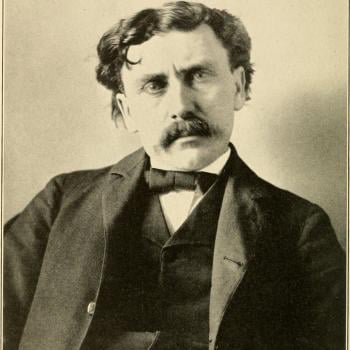My last post looked at arguments for the dating of the four canonical gospels as we have them. The standard view holds that all four gospels are later than 70 AD, though some very credible scholars hold other views. I argued that an overwhelming weight of evidence forces us to place Mark’s Gospel after the Fall of Jerusalem in 70, and if that is correct, that means post-70 dates for all the other gospels, as these rely on Mark.
That point about Mark disposes of another argument cited for early datings of the gospels, which goes like this. The Book of Acts ends with Paul arriving in Rome, somewhere around 62 AD, but does not refer to his time in that city in any detail, or his death. The book concludes with these very general words:
And he lived there two whole years at his own expense, and welcomed all who came to him, preaching the kingdom of God and teaching about the Lord Jesus Christ quite openly and unhindered (Acts 28: 30-31)
Therefore, in this view, this was written not long after 63 or so, while Paul was still alive. And if Acts was written after Luke’s gospel, then Luke (in this model) must be pre-62 or so. That’s all highly logical, but it’s also insupportable. If Luke’s gospel drew on Mark’s, and Mark wrote after 70, that structure is impossible. Luke wrote his gospel after 70, probably a couple of decades after, and Acts followed.
Multiple reasons might explain Luke ending Acts as and when he does. Perhaps he planned a third volume in what would have been a trilogy, so that Luke-Acts would have concluded with Paul in Rome. Or else (as many scholars believe), Luke wished to end the story as the gospel with the gospel established in Rome, the center of the known world. But no, he was not writing in the 60s.
This also gets to attempts to date particular passages in the gospels – and especially John – by citing apparently pre-70 elements, including odd details of topography. That raises a critical point about what we mean when we talk about dating a gospel. These are not unitary documents, and most reveal stages and layers of composition and editing. To say that some element in a story suggests an early recollection of pre-70 Jerusalem might well mean that this particular story came from that primitive era, and was later incorporated into a larger and more complete edition.
That would apply, for instance, to the pool of the five porticos reported in John’s chapter 5, the details of which have apparently been confirmed by modern archaeology. That example features commonly in modern apologetics, but it proves little about dating texts. Of course the gospels recall such older details, whether or not they were still in place at the time a gospel reached its final version.
Might these fine antiquarian details have been living memories of an already lost world? To pursue this theme a little, let me tell a story that at first sight might have nothing to do with the topic, but honestly it does. Imagine a Jewish man born in 1913, and raised in Berlin or Vienna. He is very fortunate to flee his country in 1938, and finds his way to the United States. He never returns to Europe, finding the memories and associations too painful to bear. But he never forgets the city of his childhood and early years. He remembers them nostalgically, and in huge detail, at least the way they were. At age 70, in 1983, he still bends the ears of his children and grandchildren about those early times, and can give them a verbal tour of the bygone cityscapes, all the long-shattered monuments, all the fine coffee shops and pastry shops. In his mind, those cities still exist in their pristine 1938 form. Now imagine further that in 1983, our exile writes a memoir of his early life. He is depicting the cities as they existed some forty-five years later, and every page contains a circumstantial detail that no longer exists. That does not mean that he was actually writing in 1938.
So let’s apply our twentieth century chronology back to first century Jerusalem. Just when did the last resident of pre-70 Jerusalem die? Assume a man born in 45 AD, who knew the city as a young adult, and who fled into exile in the mid-late 60s. He might have endured into the 110s or even later, and that is after the latest possible date for the final composition and editing of John’s gospel. Memory being what it is, something like the five porticos might well have featured as a cherished detail. (“You should have seen that pool!”)
But we need not move that far into the second century. We need not assume any unusual longevity to appreciate just how many people walking around in 95 AD (say) would have some recollection of pre-war Jerusalem, which they shared avidly with anyone prepared to listen. In terms of chronology, it would be rather like me today recalling a city I visited back in the late 1980s.
Perhaps the later Johannine author or editor was incorporating such architectural details to give his story authentic period color, and a sense of immediacy. Hence the present tense of “there is a pool,” which I see as a simple historic present. That is, and has long been, a common literary and rhetorical device. That same point would apply to other details and Semitic words, like Gabbatha in John 19.13. They don’t prove early composition.
Some particular passages and stories in John might well be early, but others are very late indeed, reflecting several decades of transmission, evolution, and elaboration. The story of Mary Magdalene is one such, that of Lazarus another. This did not all happen by the 60s AD. Bits of John might well be pre-70, but the overall text was not compiled in anything like the form we know it until the end of the first century.
Arguably too, as I suggested recently, the four canonical gospels must be far enough removed from the time they describe for the authors to have wholly lost or forgotten quite a few of the earliest traditions of the apostolic community – even about the Resurrection narrative – and that did not happen overnight. Perhaps it took a cataclysm like that of the 60s, with all the destruction and forced exile, to have effected such a sweeping loss of memories.
So as I argued before, no worthwhile evidence leads us to date any of the canonical gospels before 70 at the earliest. And certainly none of their non-canonical rivals.
As a footnote, let me add one example where the “historic present” argument may or may not apply. The Epistle to the Hebrews makes wonderful sense if indeed the Temple still stood and its sacrifices still operated, but (arguably) not otherwise. Yet a great many scholars put this text after 70, perhaps significantly so. In support of that position, other ancient post-70 authors, both Jewish and Christian, do use a “historic present” approach here, referring to the fallen Temple as if it still existed, although they knew perfectly well that it did not. I don’t presently know enough to comment on that debate, so I need to find out.













